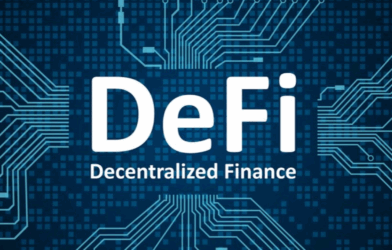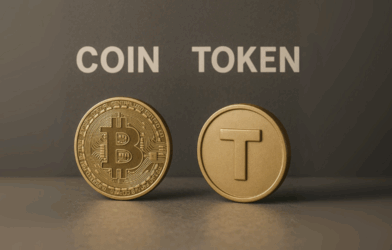Subtotal $0.00
Breaking down in simple terms how users earn by contributing liquidity
In the realm of conventional finance, you earn interest when you deposit cash because banks leverages your money to lend to others. In crypto, the same idea exists—but it’s much more dynamic, decentralized, and often more profitable. It’s called yield farming and liquidity mining.
For newcomers, these words can seem complex, but the concept is actually simple: you let your crypto work for you, and in exchange, you receive rewards. Let’s break this down in simple terms.
The Role of Liquidity in Crypto
Each time you exchange Bitcoin for Ethereum, or exchange stablecoins such as USDT for USDC, there must be sufficient supply of both tokens for the trade to occur smoothly. This supply is referred to as liquidity.
In centralized exchanges (such as Binance or Coinbase), the firm supplies liquidity via order books. But in decentralized finance (DeFi), there isn’t any company to oversee trades—it’s all run by smart contracts. That’s where liquidity providers (LPs)—regular users—come in.
Liquidity Mining – Fuelling DeFi
Liquidity mining is the act of putting your tokens into a liquidity pool (a smart contract that contains pairs of tokens, such as ETH/USDT on Uniswap or PancakeSwap).
And this is how it plays out in reality:
- You put an equal value of two tokens (e.g., $500 of ETH and $500 of USDT) into a liquidity pool.
- Other users trade against this pool.
- Each time a trade is conducted, a small fee is paid.
- As a liquidity provider, you receive a portion of those fees.
It’s similar to having a tiny piece of a bank or an exchange—you receive money every time someone uses your service.
✅ In short: Liquidity mining = providing tokens to decentralized exchanges and receiving trading fees.
Yield Farming – Bringing Rewards to the Next Level
Yield farming is an extension of liquidity mining. Rather than just getting rewards for trading fees, you can also receive bonus rewards (typically in the form of the native token of the exchange).
For instance:
- You add liquidity to Uniswap and receive reward in fees.
- The platform also rewards you with additional tokens (UNI) as a bonus.
- If you further invest those UNI tokens in another protocol to receive more reward, that’s yield farming.
It’s called “farming” because you’re planting your tokens in different pools and harvesting rewards, often moving funds around to chase the highest returns.
✅ In short: Yield farming = stacking rewards on top of liquidity mining by reinvesting tokens across DeFi platforms.

Why Do Projects Offer Rewards?
- You might wonder: why do DeFi platforms give away extra tokens? The answer is incentives.
- For traders: Liquidity ensures smooth trades with minimal slippage.
- For projects: Token distribution fosters community and decentralization.
- For users: Increased rewards incentivize individuals to take part, making the platform more appealing.
It’s a win-win model—projects receive liquidity, and users generate income.
Risks You Ought to Be Aware Of
Although yield farming and liquidity mining sound lucrative, they are not risk-free. A few of the important risks are:
- Impermanent Loss: If the value of one token in the pair fluctuates radically, you could receive less value back when you withdraw than if you had simply kept your tokens.
- Smart Contract Bugs: DeFi operates on code. If there is a bug, hackers can take advantage of it.
- High Volatility: Rewards can change, and tokens you receive can depreciate rapidly.
- Rug Pulls: In malicious projects, developers can leave the platform and remove liquidity.
- As the idiom goes: high risk, high reward.
Real-World Analogy
Just imagine:
Liquidity mining = leasing your funds to a market stall so merchants can trade goods, and you get paid a fee per transaction.
Yield farming = taking the returns and re-investing them in other stalls, markets, or farms to gain as much overall revenue as possible.
The Future of Yield Farming
Despite risks, yield farming has become one of the pillars of DeFi. It has:
- Attracted billions of dollars into decentralized exchanges.
- Created new opportunities for passive income.
- Pushed innovation in DeFi protocols.
As the industry matures, we’re seeing safer designs, insurance options, and more user-friendly platforms. In the future, yield farming may become as normal as depositing money into a bank savings account—only more global and open to anyone with an internet connection.
Final Thoughts
Yield farming and liquidity mining are at the heart of DeFi’s promise: putting financial power back into the hands of users. By providing liquidity, everyday people become part of the system that powers crypto trading—and in return, they earn rewards.
The solution is education and prudence. Beginners should begin small, know the danger, and ease into opportunities. If done properly, yield farming and liquidity mining can make your crypto a working, income-producing asset.












Tnews
Whether it\'s breaking news, expert opinions, or inspiring athlete profiles, your blog delivers a winning combination of excitement and information that keeps.
Tnews
The way you seamlessly blend statistical insights with compelling storytelling creates an immersive and captivating reading experience. Whether it\'s the latest match updates, behind-the-scenes glimpses.